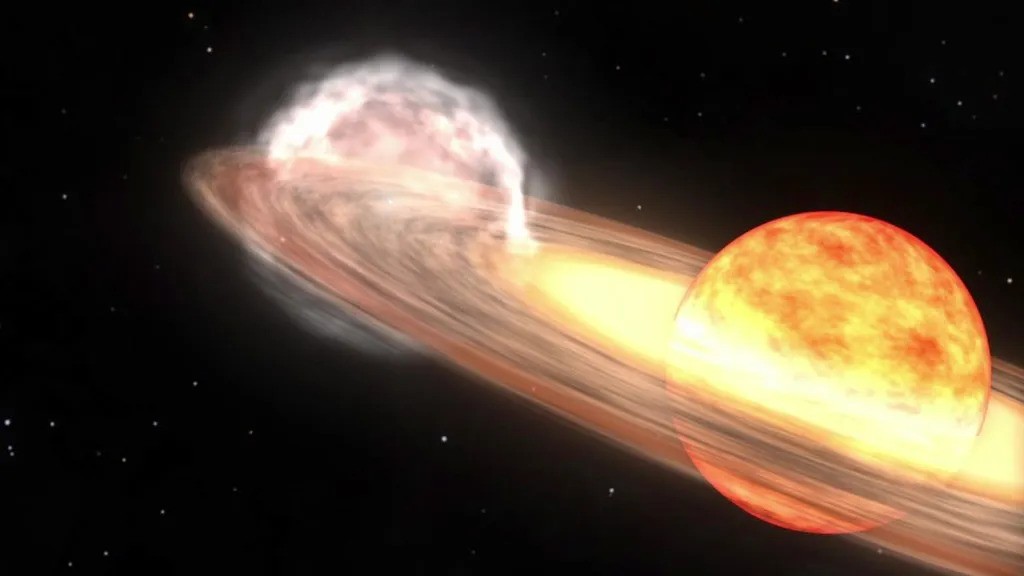
Astronomers and stargazers are eagerly awaiting the appearance of a "new" star, which will burst into view in the skies any night now.
The star, T Coronae Borealis (T CrB) or the "Blaze Star," is a nova that appears above our heads roughly every 80 years and will be visible with the naked eye, according to NASA.
Situated roughly 3,000 light-years away in the Corona Borealis, or Northern Crown constellation, the nova is actually a pair of stars — an ancient red giant and an Earth-size white dwarf that is slowly stripping hydrogen from its companion.
Once enough hydrogen accumulates on the white dwarf, the growing pressure and heat triggers a thermonuclear blast that is visible from Earth. Besides being a spectacular astronomical event, the explosion helps astronomers to glean insights into how stars behave.
"The novae are caused by material from the red giant of the T CrB system being pulled onto its white dwarf binary component," Edward Bloomer, a senior astronomer at the Royal Observatory in Greenwich, London, told Live Science. "Observing the light produced essentially lets us 'map out' the system during this energetic event, and understand more about the mechanics of the nova process itself."
Two previous eruptions from T CrB, in 1866 and 1946, are well-documented, and evidence suggests the nova may have also been observed in 1787 and 1217.
In 1217 Abbot Burchard, a German monk and leader of Ursberg Abbey, recorded a rare sight appearing in the Northern Crown in his chronicle of the year. "A wonderful sign was seen," Burchard wrote, which "shone with great light" over "many days."
In 1866 and 1946, observations of the star showed that it grew in brightness for around 10 years, dimmed slightly in a "pre-eruption dip" and then became visible from Earth for about a week.
Given the nova's distance from us, the explosions we witness have an approximate 3,000-year lag as the light travels to Earth. By studying the light, astronomers can learn even more about the distant blast.
"One of the really cool things about TCB is its long observational history, so we've been able to make better and better observations each time of the same fundamental system," Bloomer said.
The exact date and time of the star's eruption isn't known, but given the punctual schedule of its past explosions and the fact that it's already had its pre-eruption dip, astronomers expect it to appear before September.
"This will be its first outburst since modern spectroscopic observations have been available," Andrew Norton, a professor of astrophysics at the Open University in the U.K., told Live Science. Astronomers now have "the capability to observe it at other wavelengths across the electromagnetic spectrum (such as X-rays and radio waves)," he added.
T CrB is one of 10 recurring novas charted by astronomers in the Milky Way that erupt at least once every century, but astronomers think there are many more out there. Spotting them is a difficult task — but this could become a lot easier when the Vera C Rubin Telescope comes online in late 2025 or early 2026.
When the telescope begins operating, astronomers plan for its full sky scans to map the tumult across our skies in real time.
"It's powerful, fast, and has a wide field of view, so it is going to see large swathes of the sky every few nights," Bloomer said. "This may reveal vast numbers of transient events like novae, essentially by comparing before-and-after observations every couple of nights."







